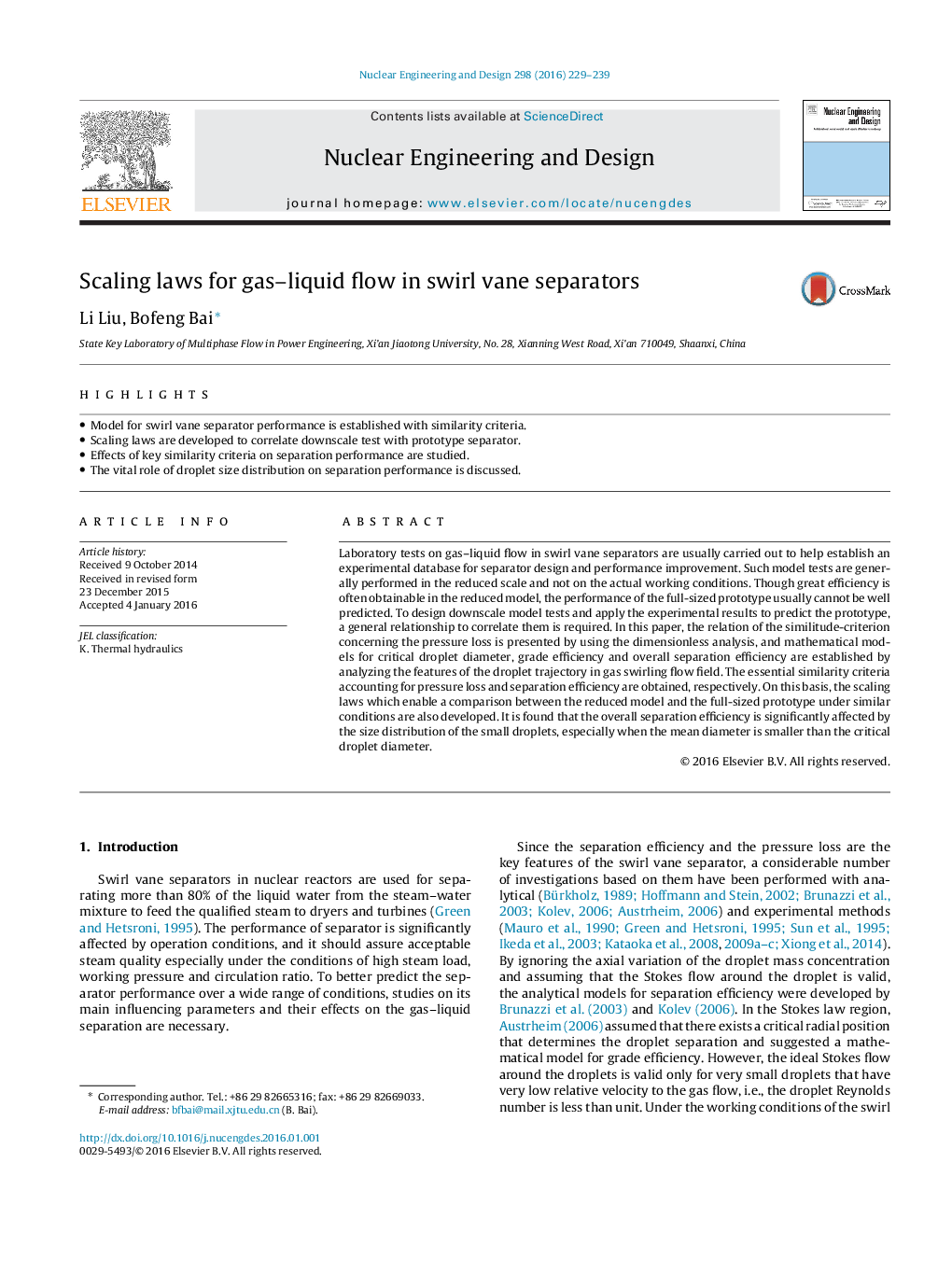| Article ID | Journal | Published Year | Pages | File Type |
|---|---|---|---|---|
| 6760185 | Nuclear Engineering and Design | 2016 | 11 Pages |
Abstract
Laboratory tests on gas-liquid flow in swirl vane separators are usually carried out to help establish an experimental database for separator design and performance improvement. Such model tests are generally performed in the reduced scale and not on the actual working conditions. Though great efficiency is often obtainable in the reduced model, the performance of the full-sized prototype usually cannot be well predicted. To design downscale model tests and apply the experimental results to predict the prototype, a general relationship to correlate them is required. In this paper, the relation of the similitude-criterion concerning the pressure loss is presented by using the dimensionless analysis, and mathematical models for critical droplet diameter, grade efficiency and overall separation efficiency are established by analyzing the features of the droplet trajectory in gas swirling flow field. The essential similarity criteria accounting for pressure loss and separation efficiency are obtained, respectively. On this basis, the scaling laws which enable a comparison between the reduced model and the full-sized prototype under similar conditions are also developed. It is found that the overall separation efficiency is significantly affected by the size distribution of the small droplets, especially when the mean diameter is smaller than the critical droplet diameter.
Related Topics
Physical Sciences and Engineering
Energy
Energy Engineering and Power Technology
Authors
Li Liu, Bofeng Bai,
